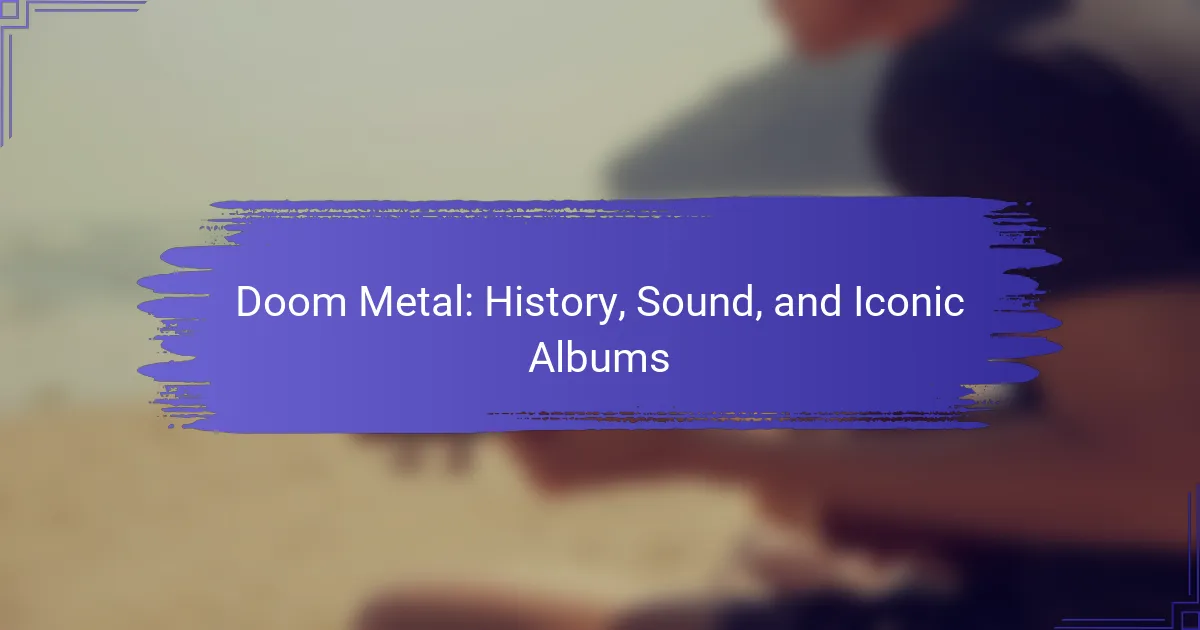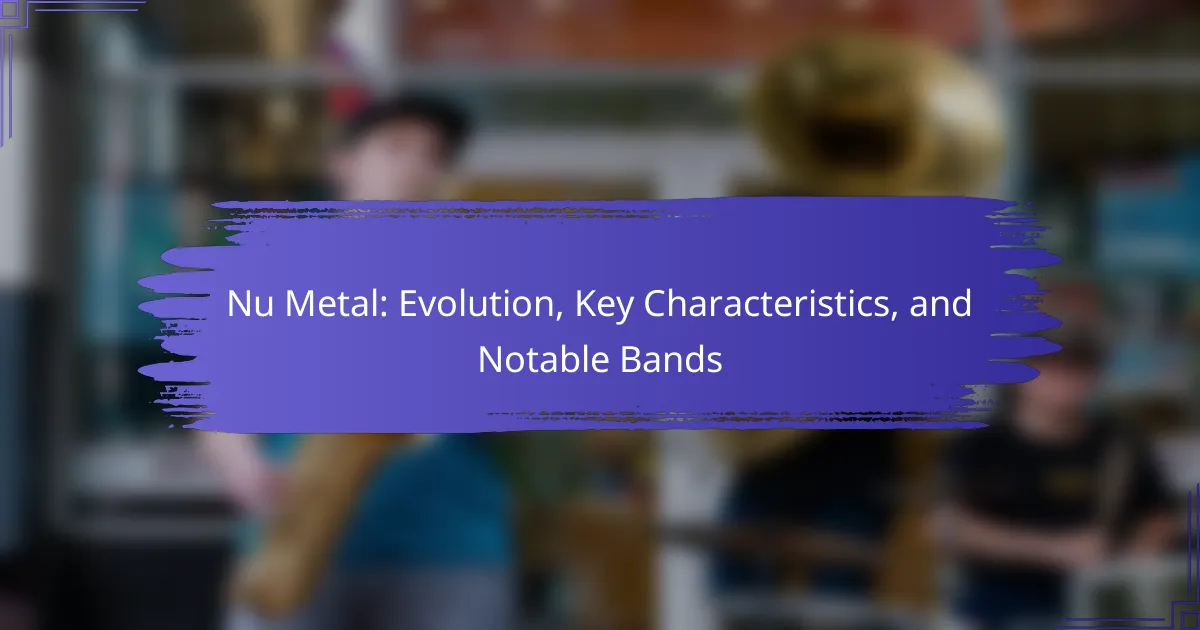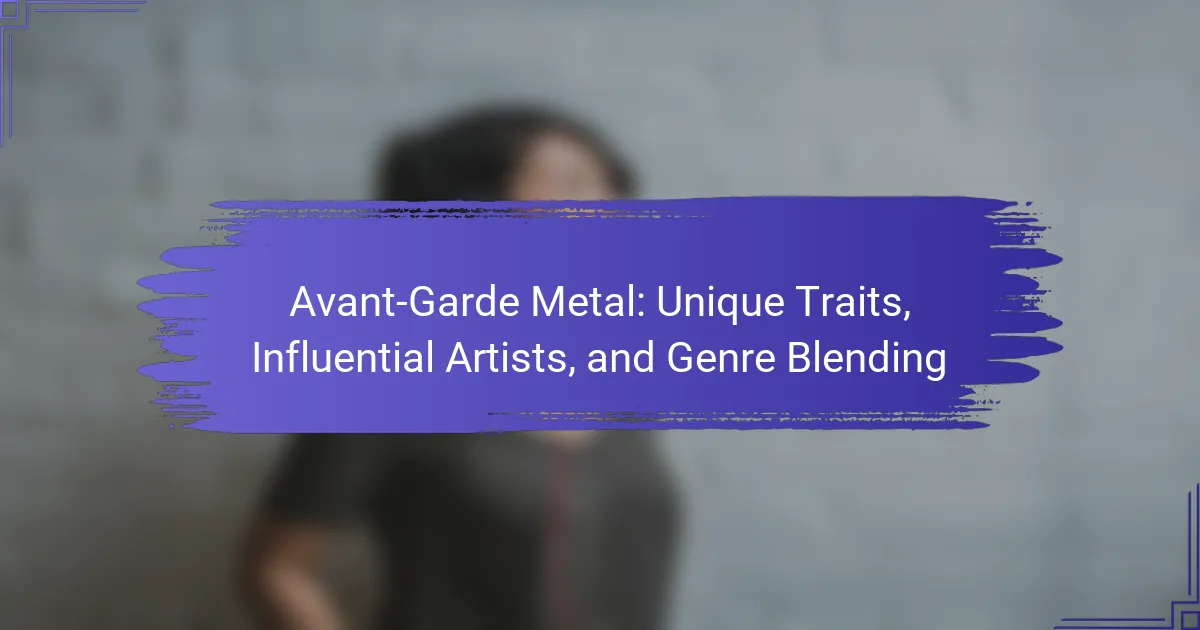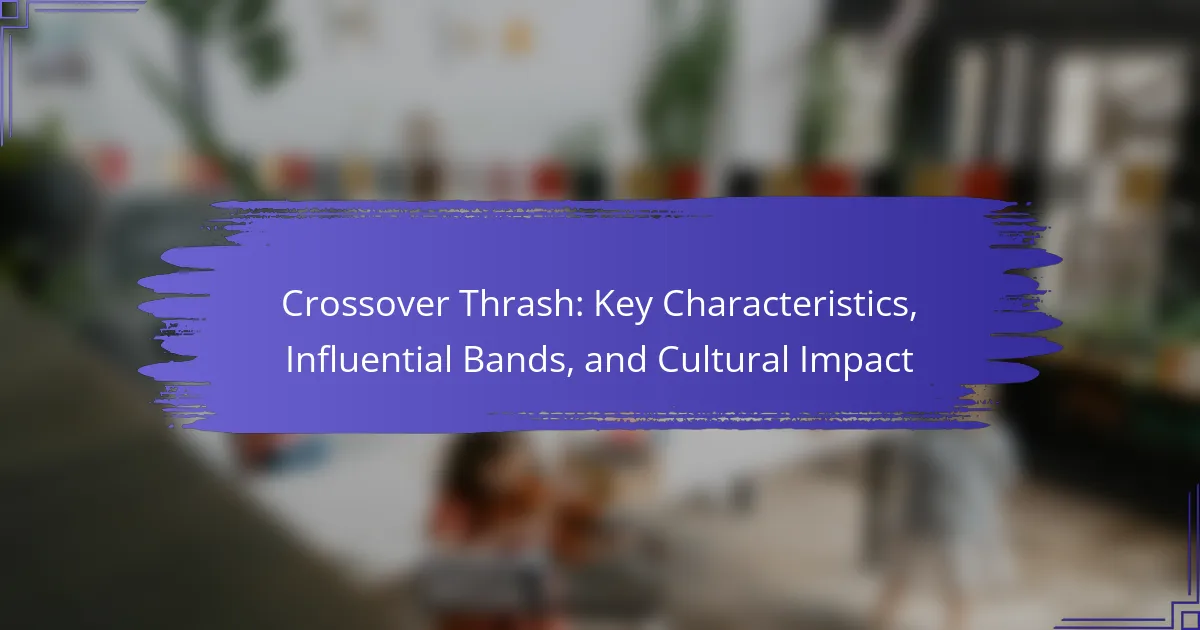Death metal is a genre known for its heavy guitar riffs, growled vocals, and complex song structures. This article explores its defining features, highlights notable artists like Cannibal Corpse and Death, and examines the evolution of the genre through various subgenres and cultural influences. Additionally, it addresses common misconceptions surrounding death metal and its musicality.
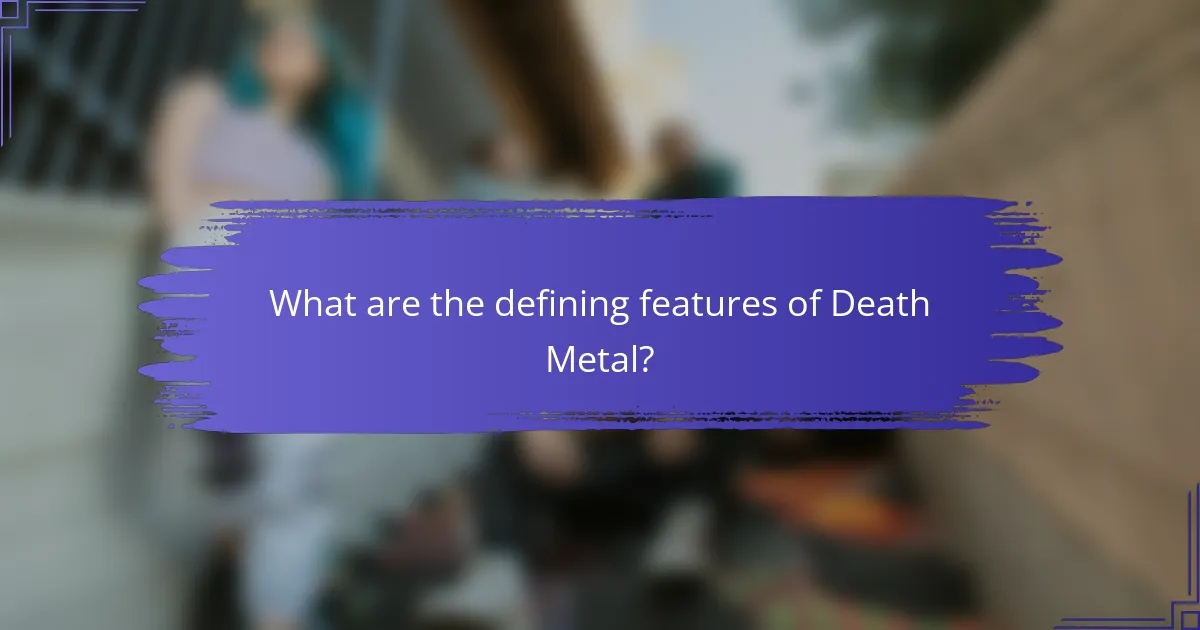
What are the defining features of Death Metal?
Death metal is characterized by its heavy guitar riffs, growled vocals, and complex song structures. The genre often features themes of death, violence, and the macabre, setting it apart from other metal styles.
Notable artists include Cannibal Corpse, Death, and Morbid Angel, each contributing to the evolution of the genre. Death metal has roots in thrash metal and has influenced various subgenres, showcasing its adaptability and ongoing relevance in the music scene.
The unique attribute of death metal lies in its technical proficiency, often incorporating intricate solos and time signature changes, appealing to a dedicated fanbase. Rarely, death metal also incorporates elements from other genres, such as jazz or classical, enhancing its diversity.
How does musical structure differentiate Death Metal from other genres?
Death metal’s musical structure is characterized by complex arrangements, aggressive tempos, and distinctive guitar techniques. Unlike other genres, it often features rapid drumming, low-tuned guitars, and growled vocals. The use of polyrhythms and time signature changes sets it apart, creating a unique listening experience. Notable bands like Cannibal Corpse and Death exemplify these structural elements, contributing to the genre’s evolution and defining its place in the metal hierarchy.
What role do vocals play in the Death Metal sound?
Vocals are crucial in defining the Death Metal sound, contributing to its intensity and aggression. They often feature growls, screams, and guttural tones that create a dark atmosphere. This vocal style differentiates Death Metal from other genres, enhancing its unique identity. The complexity of the vocal techniques used can also reflect the genre’s evolution, showcasing both technical skill and emotional expression. Notable artists like Chuck Schuldiner and George “Corpsegrinder” Fisher exemplify the diverse vocal approaches within Death Metal, pushing the boundaries of what vocals can achieve in heavy music.
Which themes are commonly explored in Death Metal lyrics?
Death metal lyrics commonly explore themes of death, violence, existentialism, and the macabre. These themes often reflect a fascination with mortality and human suffering. Notable topics include horror, mythology, and social issues, which contribute to the genre’s intense emotional expression. As a result, death metal serves as a medium for confronting dark realities and personal struggles.
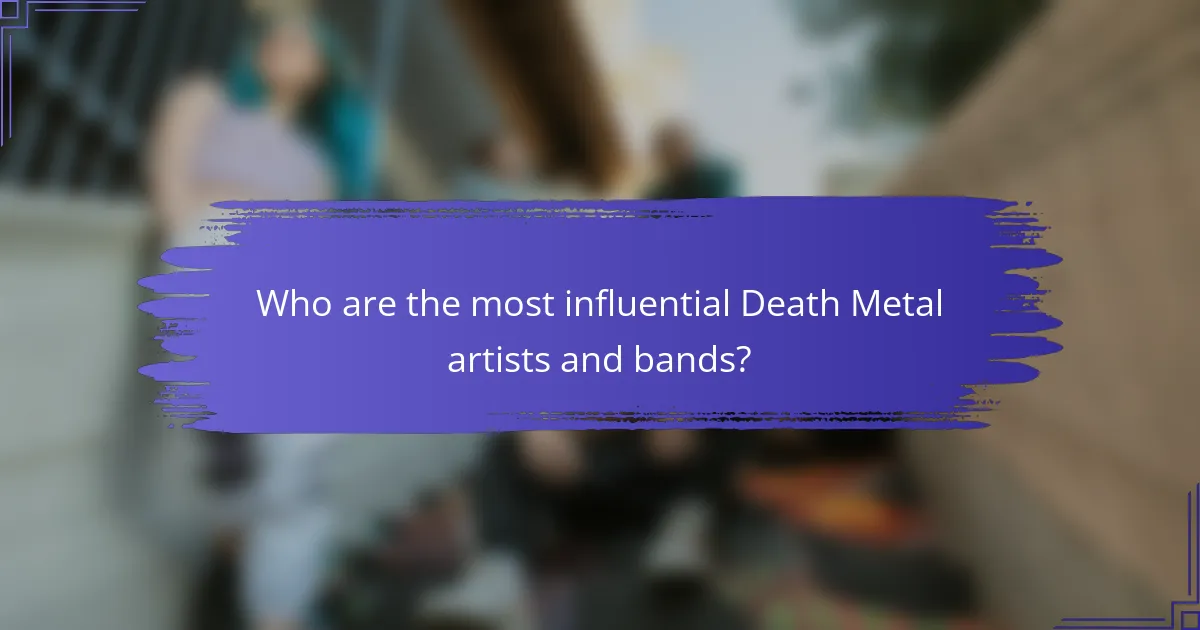
Who are the most influential Death Metal artists and bands?
The most influential Death Metal artists and bands include Death, Morbid Angel, Cannibal Corpse, and Slayer. These groups shaped the genre through their unique sound, lyrical themes, and technical prowess.
Death, led by Chuck Schuldiner, is often credited with pioneering the genre, introducing complex song structures and philosophical lyrics. Morbid Angel, known for their innovative guitar work and dark themes, was instrumental in popularizing Death Metal in the 1990s. Cannibal Corpse gained notoriety for their graphic imagery and aggressive sound, becoming a defining band of the genre. Slayer, while often categorized as Thrash Metal, has heavily influenced Death Metal with their speed and intensity.
These artists collectively contributed to the evolution of Death Metal, pushing boundaries and inspiring countless musicians. Their legacy continues to resonate within the metal community today.
What impact did pioneers like Death and Morbid Angel have on the genre?
Pioneers like Death and Morbid Angel significantly shaped death metal’s sound and structure. Their innovative techniques, such as complex guitar riffs and growled vocals, established foundational elements of the genre. Death’s album “Symbolic” introduced progressive elements, influencing countless bands. Morbid Angel’s “Altars of Madness” showcased technical skill and lyrical depth, setting high standards for future artists. Together, they pushed creative boundaries, fostering the genre’s evolution and expanding its global reach.
Which contemporary bands are shaping the future of Death Metal?
Contemporary bands shaping the future of Death Metal include Blood Incantation, Revocation, and Archspire. These bands innovate the genre through technical proficiency and unique soundscapes. Blood Incantation emphasizes atmospheric elements, while Revocation blends thrash influences. Archspire is known for their extreme speed and complex compositions. Each band contributes distinct attributes, pushing Death Metal’s boundaries and attracting new audiences.
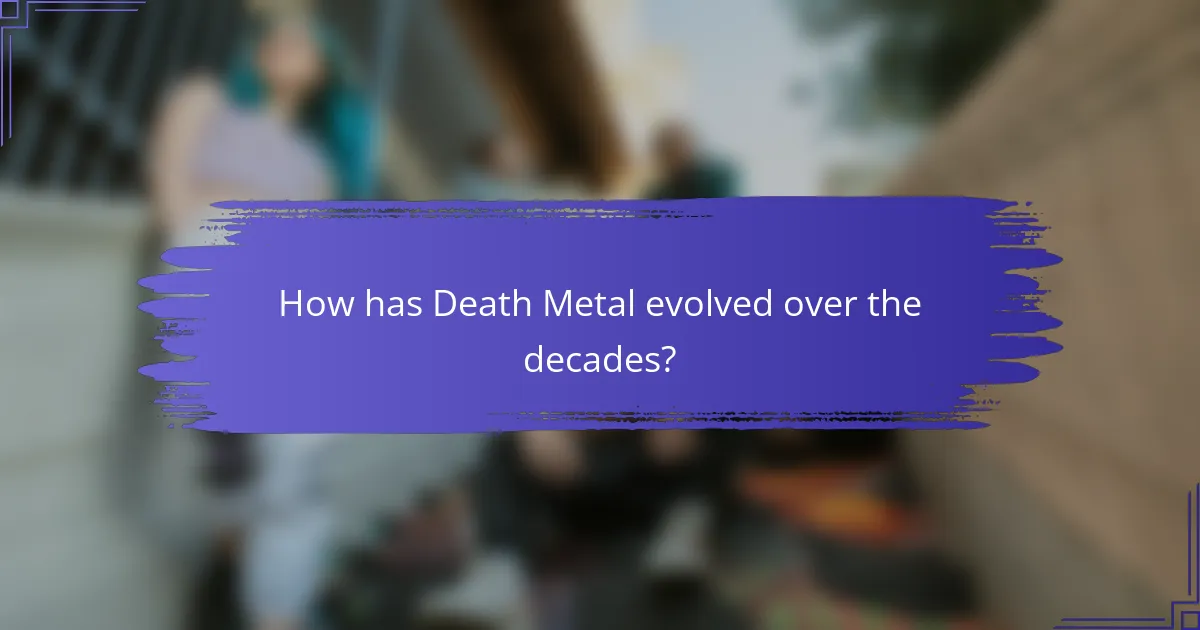
How has Death Metal evolved over the decades?
Death metal has evolved significantly since its inception in the mid-1980s, characterized by its aggressive sound and complex structures. The genre has diversified into various subgenres, including melodic death metal and technical death metal, each with unique attributes. Notable artists like Death, Morbid Angel, and Cannibal Corpse have shaped its trajectory, influencing countless bands worldwide. The integration of advanced instrumentation and production techniques has also enhanced its complexity and appeal, reflecting broader trends in music technology.
What were the key developments in the 1990s Death Metal scene?
The 1990s Death Metal scene saw significant developments in sound, style, and artist emergence. Bands like Death and Cannibal Corpse defined the genre’s technical complexity and aggressive themes. The incorporation of melodic elements and progressive influences marked a shift, with artists like Opeth and Cryptopsy pushing boundaries. Additionally, the rise of subgenres such as melodic death metal and brutal death metal diversified the scene. The establishment of independent labels helped promote underground talent, solidifying Death Metal’s global presence.
How has the genre adapted to technological advancements in music production?
Death metal has adapted to technological advancements by incorporating digital production techniques and software. Enhanced recording equipment allows for clearer sound and more complex layering. Artists now utilize digital audio workstations, enabling innovative sound manipulation and editing. This evolution has led to a diverse range of sub-genres, each with unique characteristics shaped by technology. For example, the use of auto-tune and sampling has redefined vocal styles within death metal, creating new auditory experiences.
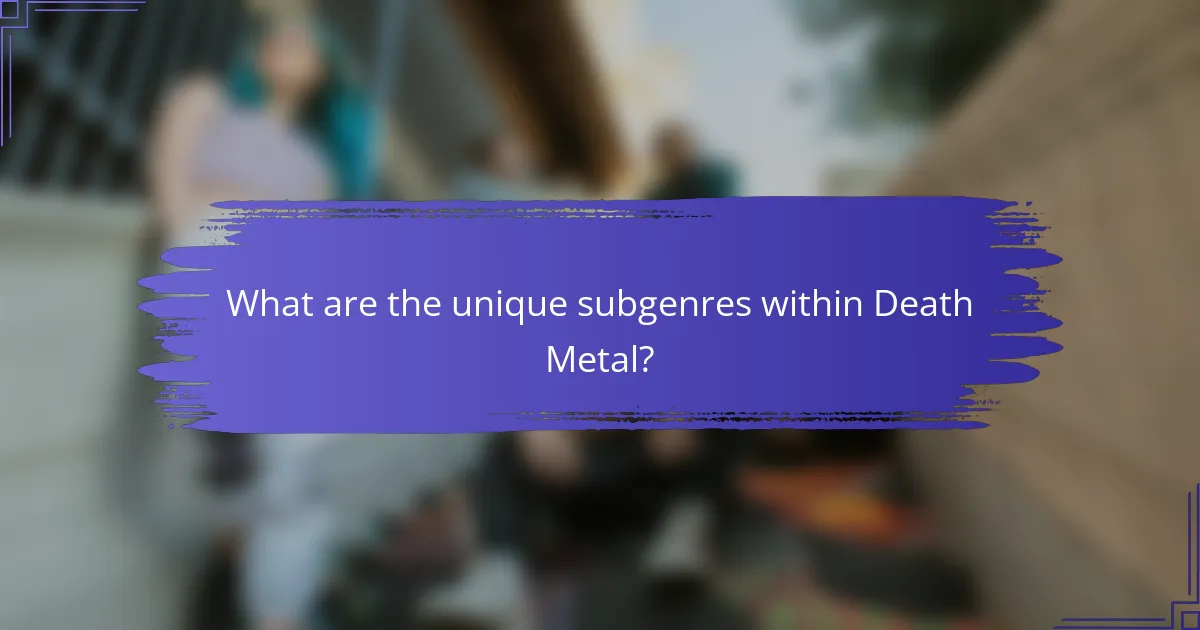
What are the unique subgenres within Death Metal?
Death metal features several unique subgenres, each with distinct characteristics. Notable subgenres include melodic death metal, characterized by harmonious melodies; brutal death metal, known for its extreme intensity; and technical death metal, which emphasizes complex instrumentation. Other subgenres are death-doom, combining elements of doom metal, and symphonic death metal, integrating orchestral arrangements. These variations contribute to the genre’s rich diversity and evolution.
How does Technical Death Metal differ from Melodic Death Metal?
Technical Death Metal is characterized by complex song structures and intricate instrumentation, while Melodic Death Metal emphasizes melody and harmonies. Both subgenres share a common root in Death Metal, but their unique attributes set them apart. Technical Death Metal often features rapid tempo changes and advanced musical techniques, exemplified by bands like Obscura and Necrophagist. In contrast, Melodic Death Metal, represented by bands such as In Flames and At the Gates, incorporates melodic elements and lyrical themes that resonate emotionally. This distinction in musical approach and thematic content illustrates the evolution of Death Metal into diverse subgenres.
What characteristics define Deathcore as a subgenre of Death Metal?
Deathcore is defined by its blend of death metal’s intensity and hardcore punk’s energy. Key characteristics include heavy breakdowns, guttural vocals, and complex guitar riffs. The genre often incorporates elements like blast beats and ambient interludes, enhancing its emotional depth. Notable bands such as Suicide Silence and Whitechapel exemplify this fusion, showcasing both aggression and melodic structures. The evolution of deathcore reflects a continuous push for innovation within the death metal framework, making it a unique subgenre.
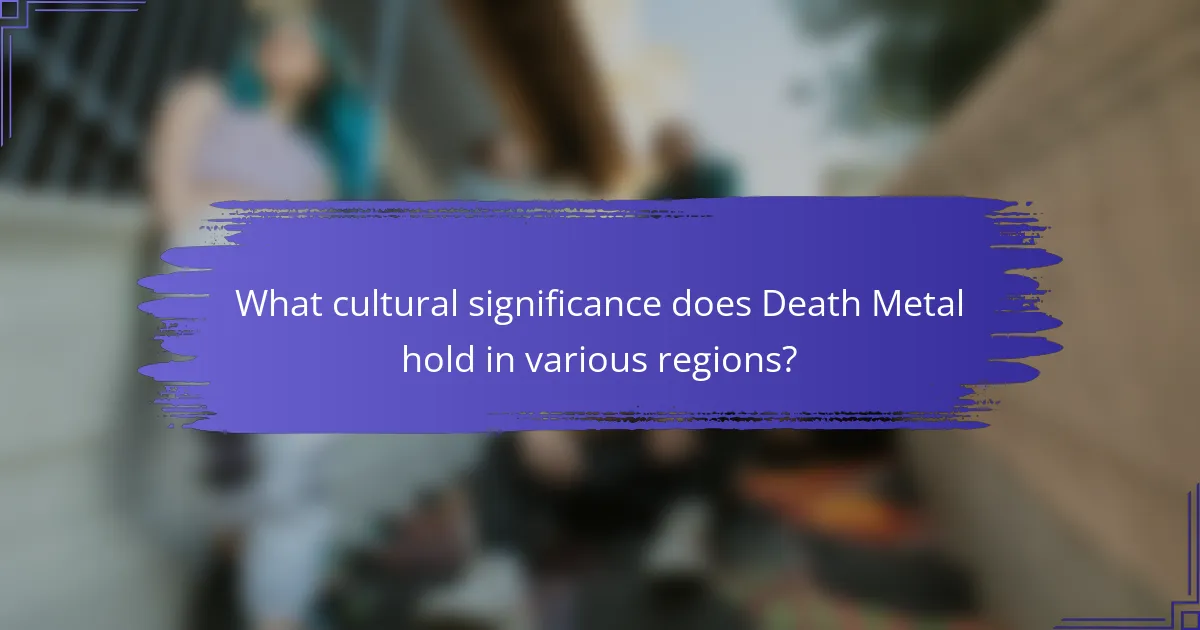
What cultural significance does Death Metal hold in various regions?
Death metal holds significant cultural importance across various regions, reflecting local values and identities. In Scandinavia, it embodies a rebellion against societal norms and often incorporates themes from Norse mythology. In the United States, it serves as a platform for addressing personal and political issues, with bands like Death and Cannibal Corpse leading the charge. In Brazil, death metal merges with local musical traditions, creating a unique sound that resonates with cultural heritage. Each region’s interpretation of death metal highlights its adaptability and the diverse influences shaping the genre.
How does the Death Metal scene differ between North America and Europe?
The Death Metal scene in North America and Europe differs in sound, culture, and notable bands. North American death metal often emphasizes technicality and speed, with bands like Cannibal Corpse and Death leading the charge. In contrast, European death metal tends to incorporate melodic elements, with influential groups such as At The Gates and Opeth.
Culturally, North American fans often focus on aggressive performance styles, while European audiences appreciate atmospheric and progressive influences. This divergence has led to unique subgenres emerging in each region, such as brutal death metal in North America and melodic death metal in Europe.
The evolution of death metal reflects these regional distinctions, with North America prioritizing raw intensity and Europe blending melody with heaviness. This landscape continues to evolve, showcasing the rich diversity within the global death metal community.
What role do festivals and live performances play in the Death Metal community?
Festivals and live performances are vital in the Death Metal community, fostering connection and expression. These events showcase the genre’s unique attributes, such as its intensity and technical complexity. They provide a platform for both established and emerging artists, allowing fans to experience the music live, which enhances the communal atmosphere. Additionally, festivals often feature diverse lineups, highlighting the evolution of Death Metal and its subgenres, thereby enriching the overall cultural landscape.
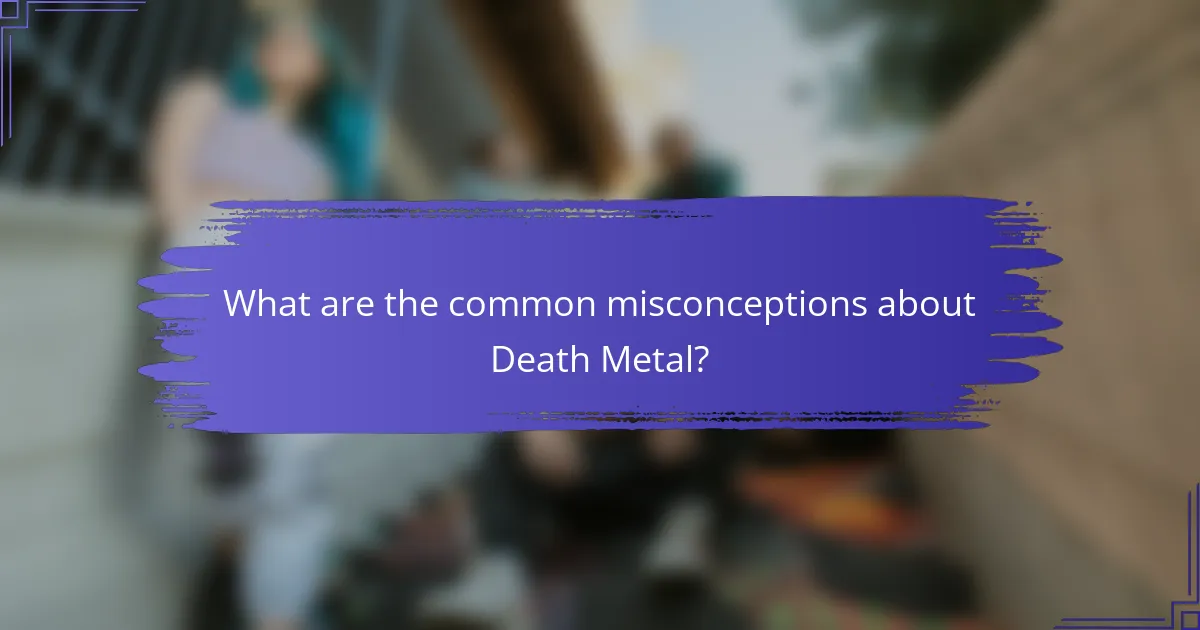
What are the common misconceptions about Death Metal?
Many misconceptions exist about Death Metal, often stemming from its intense sound and themes. One common belief is that all Death Metal is overly aggressive and lacks musicality. In reality, the genre features complex compositions and skilled musicianship. Another misconception is that Death Metal promotes violence, while many artists use dark themes to explore philosophical or existential questions. Additionally, some people think Death Metal is a niche genre with no mainstream appeal, but bands like Cannibal Corpse and Death have gained significant recognition. Lastly, some assume that Death Metal lacks diversity, whereas it encompasses various subgenres, each with unique characteristics.
Why do some people view Death Metal as controversial?
Some people view Death Metal as controversial due to its themes, aggressive sound, and cultural associations. The genre often explores dark topics such as death, violence, and existentialism, which can provoke strong reactions. Notable artists like Cannibal Corpse and Slayer exemplify these themes, contributing to the genre’s polarizing reputation. Additionally, the intense musical style, characterized by fast tempos and growled vocals, can be off-putting for mainstream audiences. As a result, Death Metal often faces criticism for promoting negativity or moral decay, despite its artistic expression and community.
How can understanding the genre’s complexity alter perceptions?
Understanding the complexity of death metal can significantly shift perceptions by highlighting its musical intricacies and emotional depth. This genre is characterized by aggressive sound, complex rhythms, and profound lyrical themes. Notable artists like Death and Cannibal Corpse have pushed boundaries, showcasing technical proficiency and emotional storytelling. Recognizing these elements fosters appreciation beyond surface-level judgments, revealing death metal as a rich, evolving art form.
What are the best practices for newcomers to appreciate Death Metal?
To appreciate Death Metal, newcomers should explore its defining features, notable artists, and evolution. Understanding the genre’s complexity enhances the listening experience.
Start with the foundational elements of Death Metal, such as intricate guitar work, aggressive drumming, and deep growling vocals. Familiarize yourself with key bands like Death, Cannibal Corpse, and Morbid Angel, which shaped the genre’s sound.
Attend live performances to experience the energy and community surrounding Death Metal. Engage with fan forums and social media to connect with other enthusiasts and gain insights into the culture.
Finally, explore the evolution of Death Metal, noting its subgenres like Technical Death Metal and Melodic Death Metal. This broader perspective will deepen your appreciation for the genre’s diversity and artistry.
